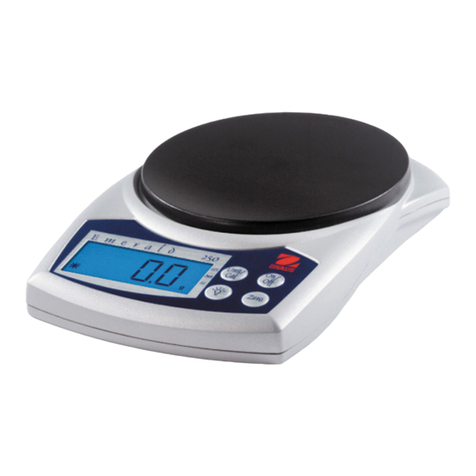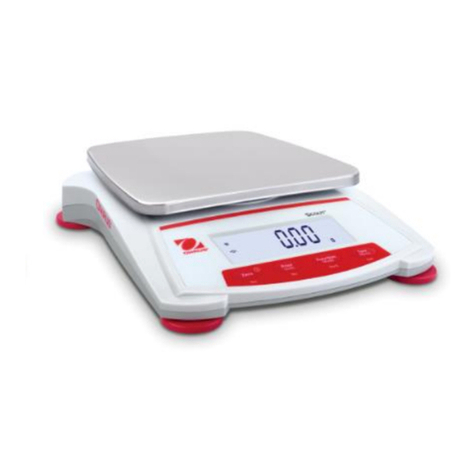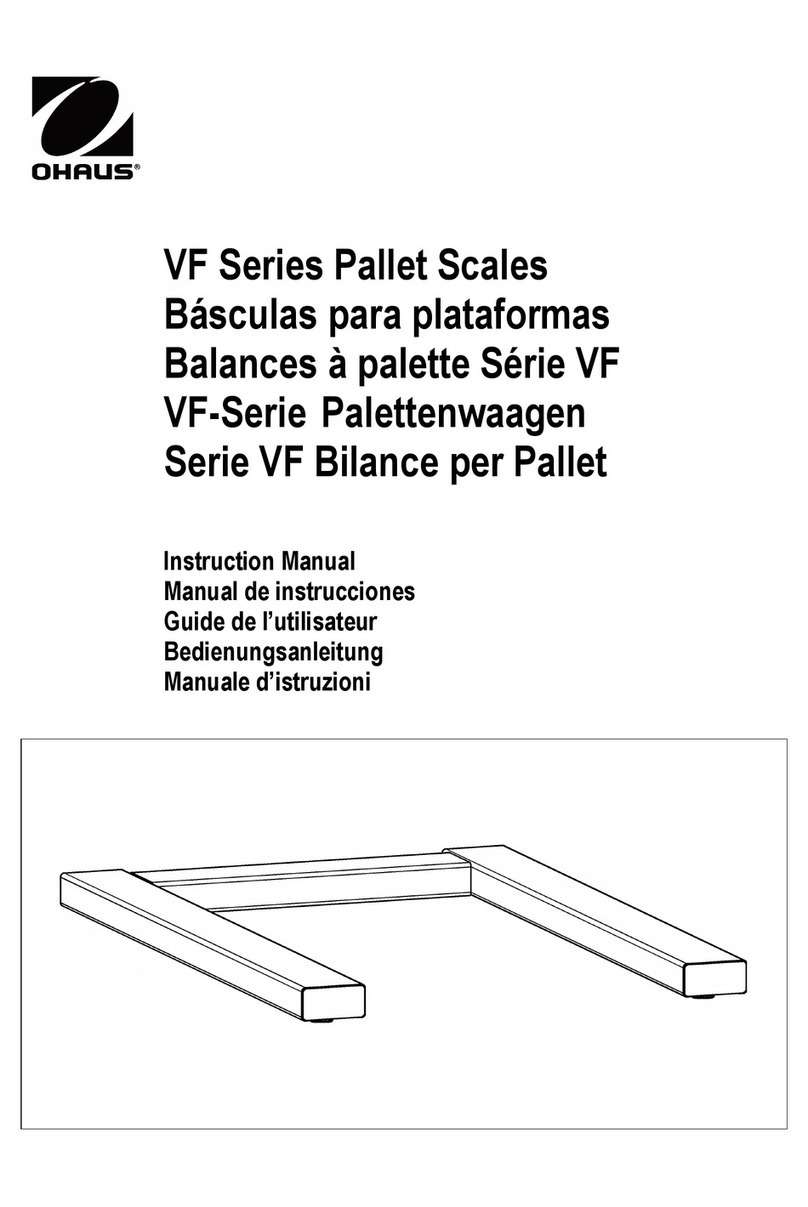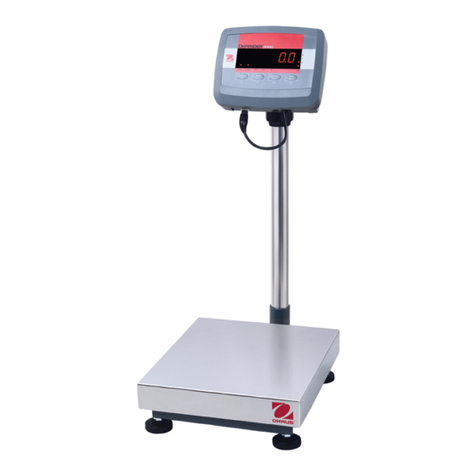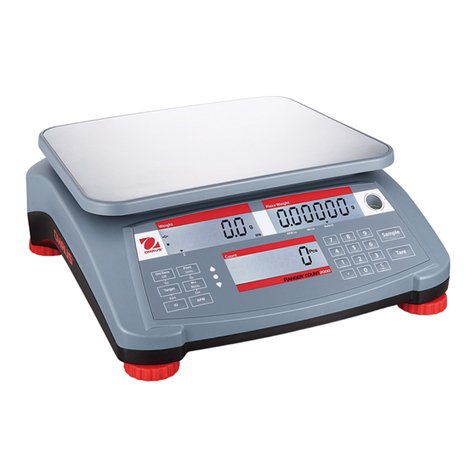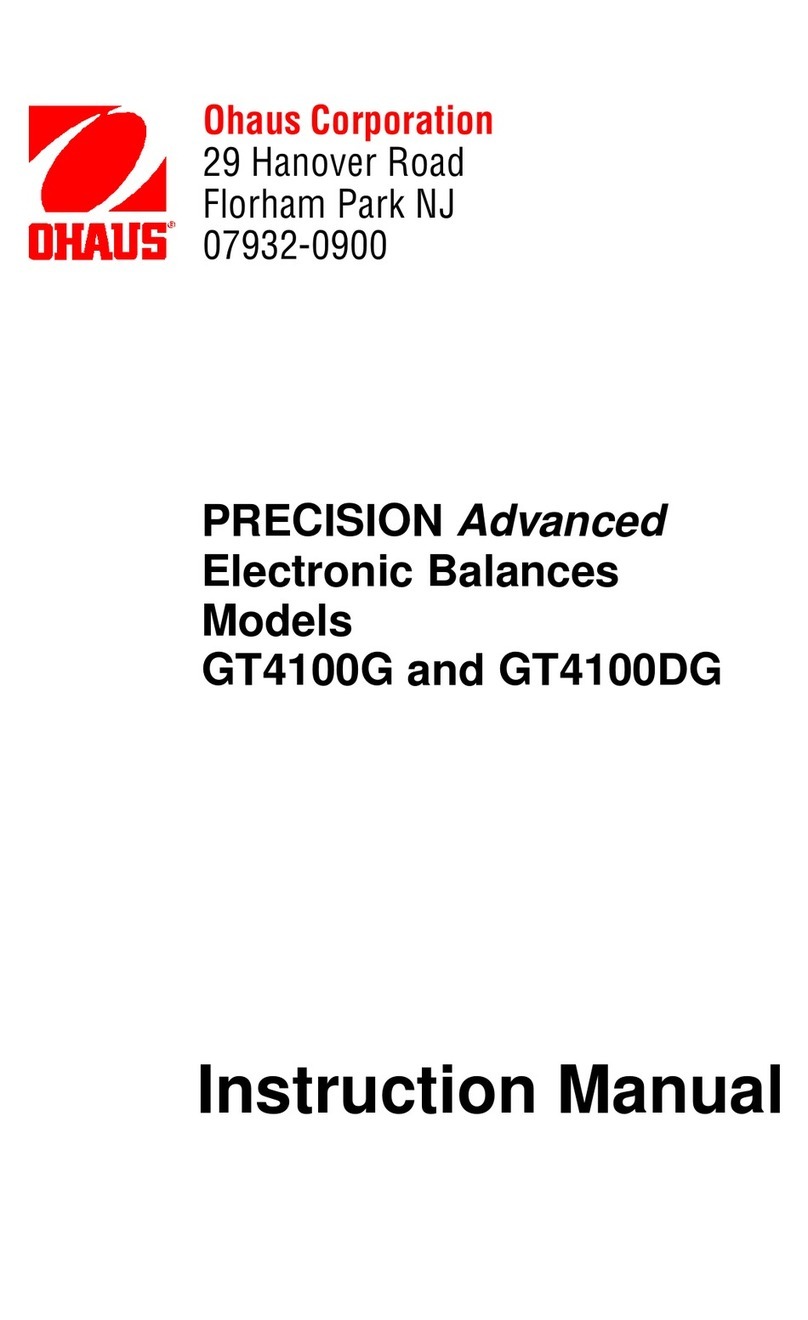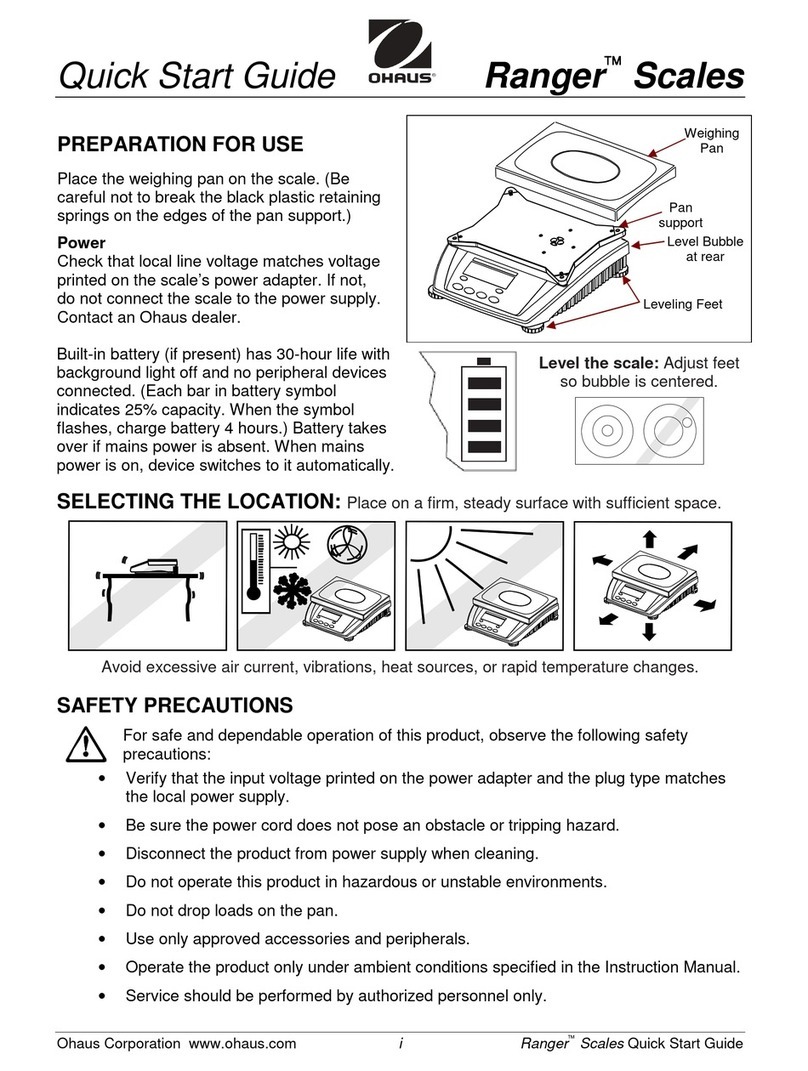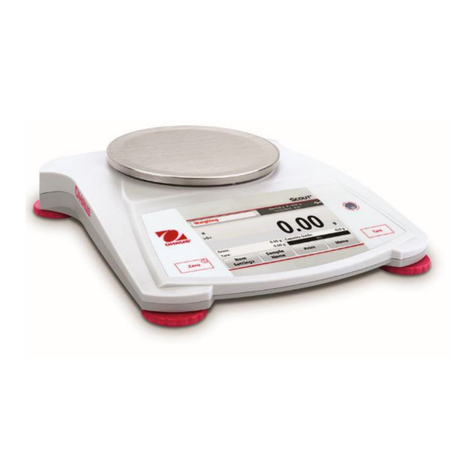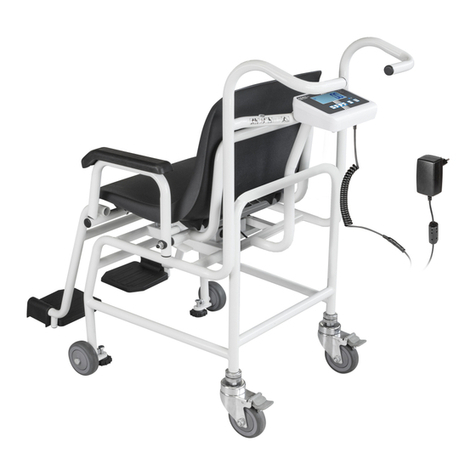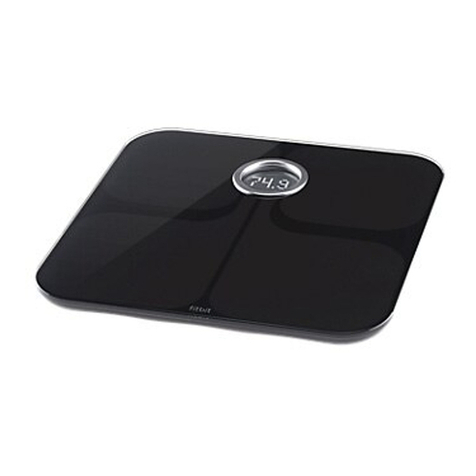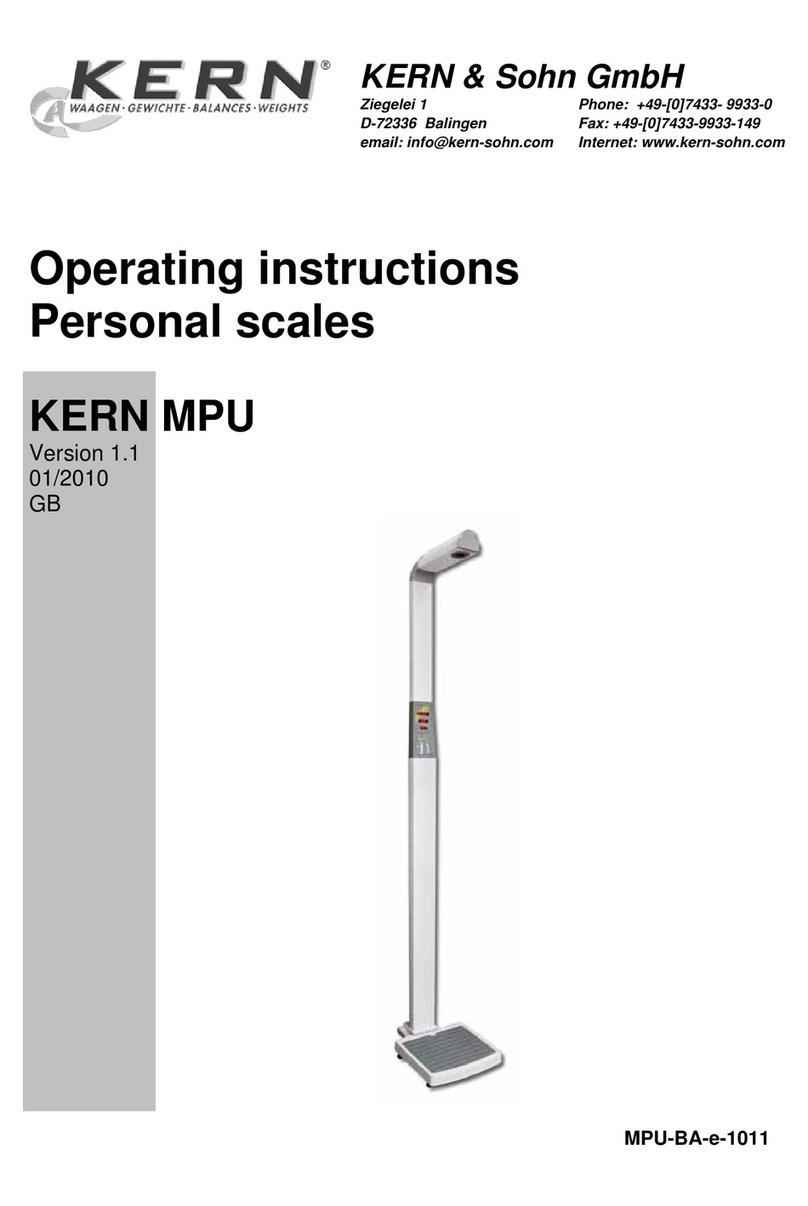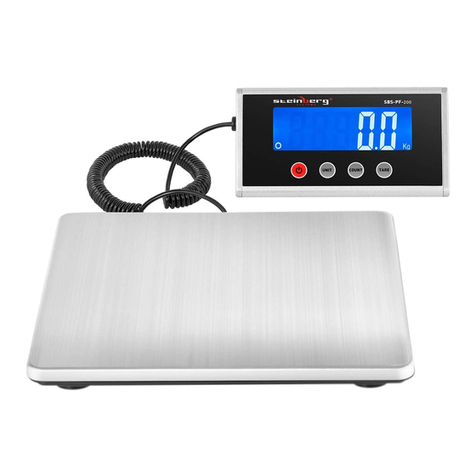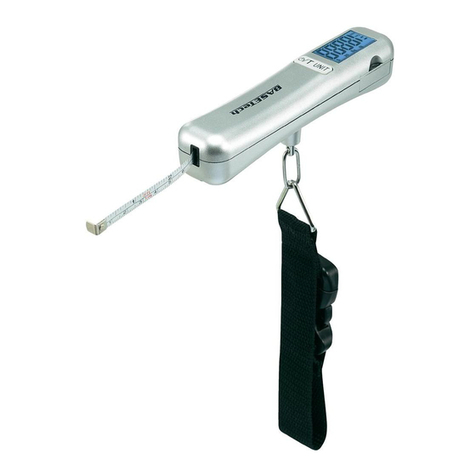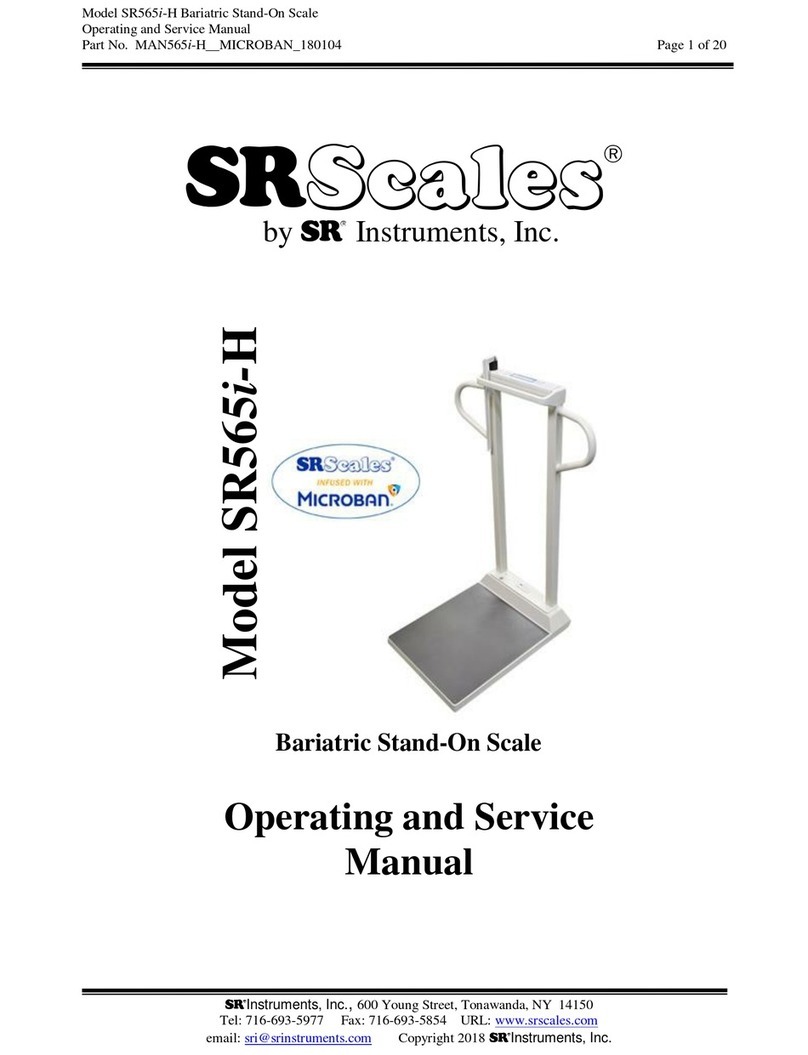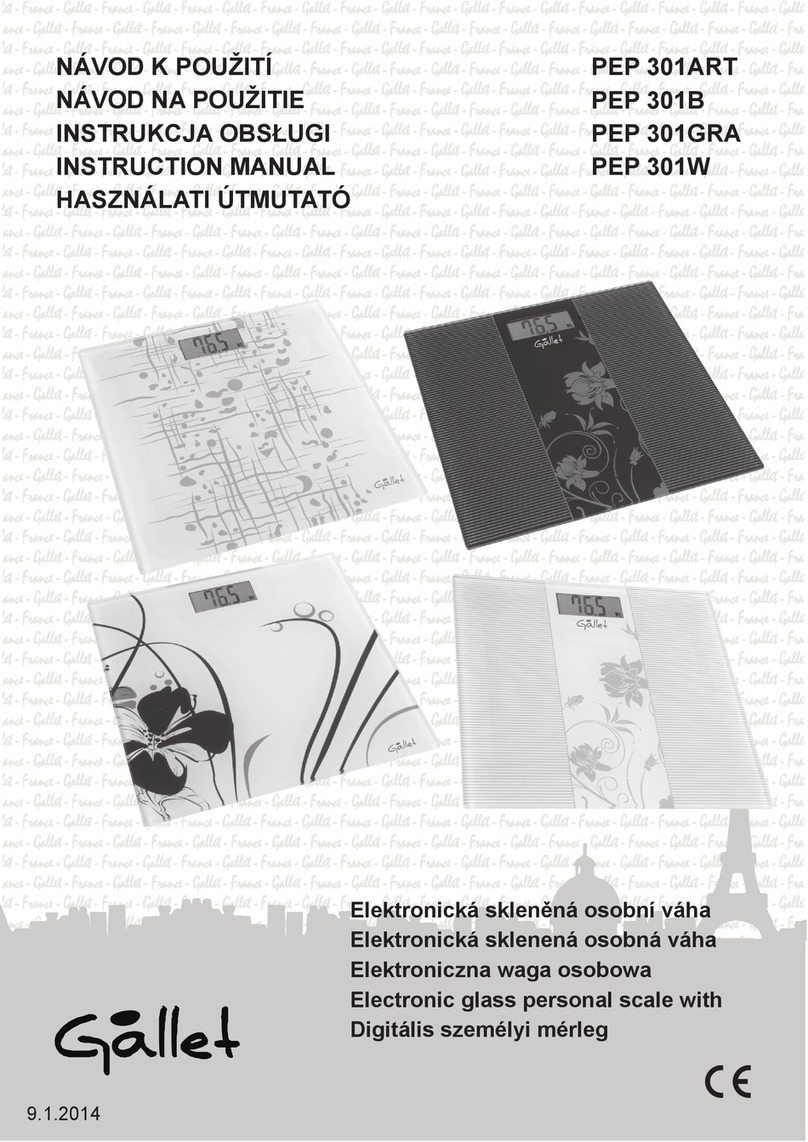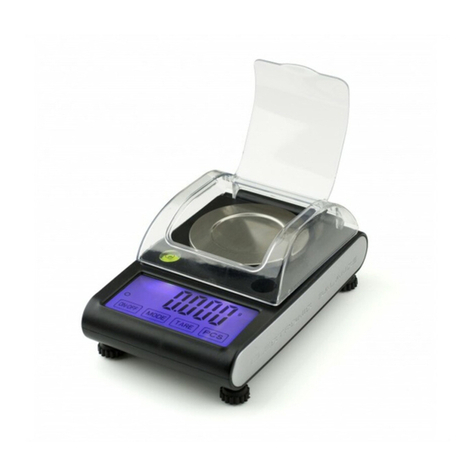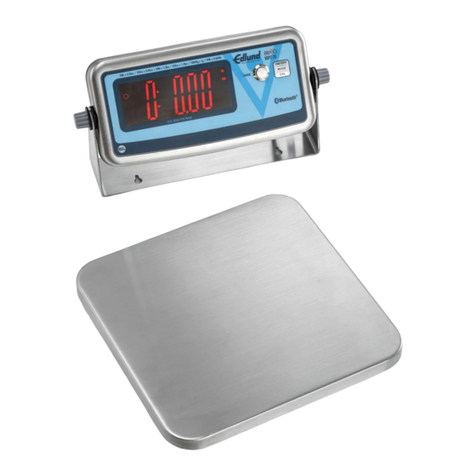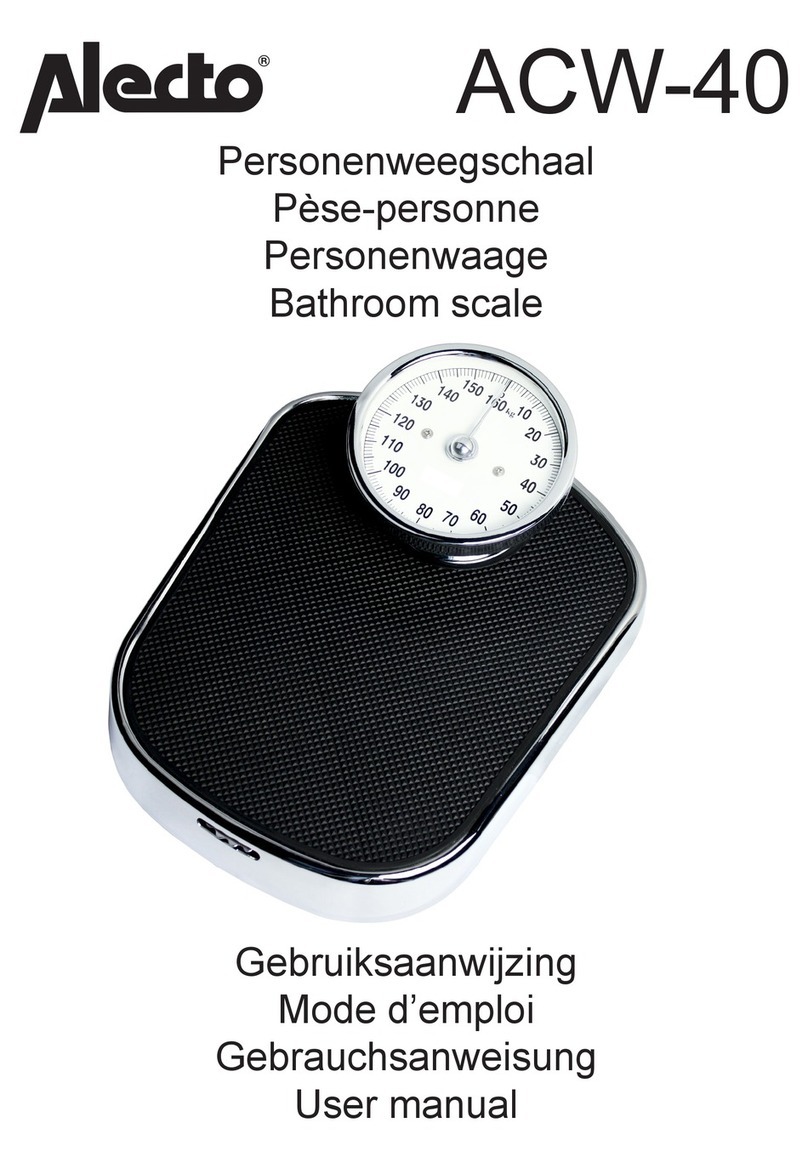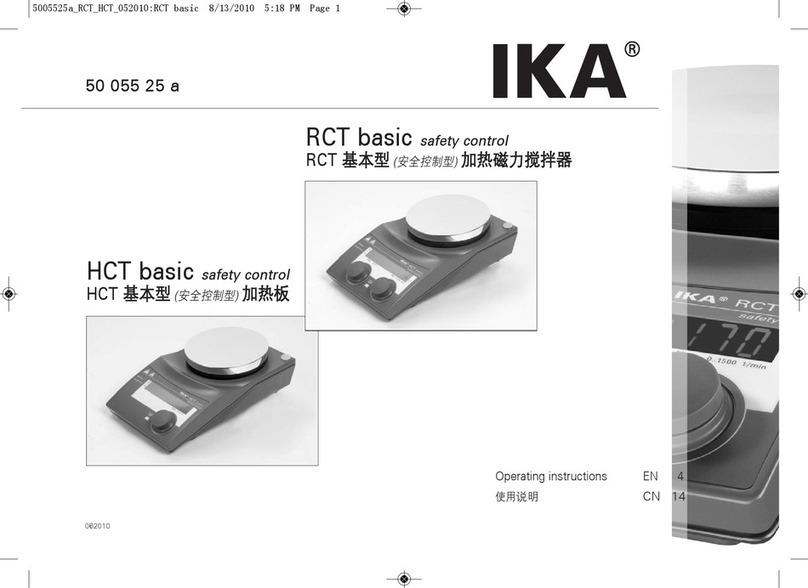EN-5 Pioneer™
4.2 Calibration Menu [.CAL.]
Span calibration should be performed daily and when the room temperature changes.
Span Calibration [SpaN]uses two weight values: zero and a weight between 50% and 100% of the
capacity of the balance.
Linearity calibration [LIN] uses three weight values zero, 50% of capacity and full capacity. Generally
this calibration is not required unless testing shows that the linearity error exceeds the Linearity
tolerance in the Specification table. (Not available in InCal models)
4.3 Setup Menu [.setup.]
Automatic Zero-Setting [azsmM] - Environmental changes can cause the display to drift. The Automatic
Zero-Setting Mechanism (AZSM) is designed to keep the balance set at zero, despite these slight
changes. (OFF, SET .5d, SET 1d, SET 2d, SET 5d)
Filter [filter] - Use the low setting (SET LO) when environmental disturbances are not present. Use
the medium setting (SET MED) for normal environments. Use the high setting (SET HI) when vibrations
or air currents are present.
Auto Tare [A-tare] - The initial item placed on the balance is assumed to be a container so it is
zeroed out. The next item is then weighed. When the pan is cleared the balance resets, waiting for a
container. (SET OFF, SET ON)
Grad [Grad] – Select the readability displayed. Reducing the readability may be needed for approval.
(SET 1d, SET [1]d, SET 10d)
Global Reset [Gbl rst] - Resets all settings to factory default values. (RESET)
4.4 Mode Menu [.mMode.]
Count Mode [Count] - [SET ON, SET OFF]
Average Piece Weight (APW) Optimization [aPwW.OPT] - (SET ON, SET OFF)
Percent Mode [PerCent] - (SET ON, SET OFF)
4.5 Unit Menu [.Unit.]
The Unit menu is used to enable or disable a specific unit. (SET ON, SET OFF) The unit is indicated by
a small character next to Unit in the display (g = grams). The default setting is Grams on and all other
units off.
T-Units - When unit [t] displays; press Yes to show the T-Unit settings; SET OFF, SET TT (Taiwan Tael),
SET TH (Hong Kong Tael), SET TS (Singapore Tael), SET TO (Tola) or SET TI (Tical).
M-Units - When unit [m] is displayed, press Yes to show the M-Unit settings; SET OFF, SET MO
(Momme) or SET ME (Mesghal).
Custom Unit - Custom Unit (c) is used to create a unit of measure not provided with the balance. The
Custom Unit is defined by a factor, a multiplier (E) and a least significant digit (LSD). The balance will
use this to convert grams to a custom unit of measure. (Example: 1 g = 0.257206 Avoirdupois Dram,
4100g x 0.01g balance)
To create a custom unit, press Yes when unit [C] is displayed.
Factor
- The Factor (F) is a value from 0.1000000 to 1.999999. When the Factor is displayed, the
first digit is flashing. Press Yes to accept its value and activate the next digit, or No to edit. When
editing, press No until the desired value appears, then press Yes to accept. Repeat until all digits have
been accepted. When the Factor flashes on the display, press Yes to accept or No to re-edit. (Example:
F = 0.257206)
E
(Multiplier)- The settings are, [E 0] (Fx1), [E 1] (Fx10), [E 2] (Fx100), [E 3] (Fx1000), [E -
3] (F/1000), [E -2] (F/100), and [E -1] (F/10). Press No to display the next setting, Yes to accept.
(Example: E = 0) Note: The multiplier selections are limited when the capacity in grams is exceeded.
LSD
- The Least Significant Digit (LSD) is the number of displayed divisions (d) by which the weight
is incremented. The values are 1d, 2d, 5d, 10d, 100d or 0.5d. Press No to go to the next setting,
press Yes to accept. (Example LSD = 1d) Note: LSD options are limited if the readability in grams is
exceeded.
The example custom unit will display [0.26 c] when 1g is placed on the pan.
Pioneer™FR-6
E
(multiplicateur) – Les paramètres sont, [E 0] (Fx1), [E 1] (Fx10), [E 2] (Fx100), [E 3]
(Fx1000), [E -3] (F/1000), [E -2] (F/100) et [E -1] (F/10). Appuyez sur No pour afficher le
paramètre suivant, Yes pour accepter. (Exemple: E = 0)
LSD
-Le chiffre le moins significatif (LSD) représente le nombre de divisions affichées (d) selon
lequel le poids est incrémenté. Les valeurs sont 1d, 2d, 5d, 10d, 100d ou 0.5d. Appuyez sur No pour
afficher le paramètre suivant, appuyez sur Yes pour accepter. (Exemple de LSD = 1d) Remarque : Les
options LSD peuvent être limitées si la précision d’affichage dépasse la précision en grammes.
L’unité personnalisée de l’exemple s’affiche [0.26 c] lorsque 1g est placé sur la plate-forme.
4.6 Menu d’impression [.Print.]
Sortie stable [Out.Stab] – Les données ne seront envoyées que lorsque l'indicateur Stable est activé.
Pour activer ce paramètre, il faut appuyer avec le bouton manuel ou avec l'option d’impression
automatique en continu ou par intervalle. (SET OFF, SET ON)
Impression automatique [A.Print] – Les données seront envoyées en continu lorsque l'option
[Continu] est définie. L’option [Inter] envoie des données toutes les 1 à 3600 secondes. Lorsque
l’option [Stable] est activée, les données sont envoyées chaque fois que la balance détecte une
nouvelle lecture stable. Cela peut être une valeur de poids uniquement [LOad] ou elle peut également
inclure un zéro stable [L+zero]. [OFF] permet de désactiver l’impression automatique.
Contenu [CONteNt] – Le contenu dans la transmission des données peut être modifié. Vous pouvez
activer ou désactiver les paramètres suivants. Chiffre uniquement [numMber] envoie un résultat
numérique uniquement. ID balance [Bal. ID] ajoute le numéro de série de la balance aux fins de
traçabilité. La référence [refer] ajoute des informations de référence pertinentes au mode actuel. GLP
[GLP] envoie des articles supplémentaires pour permettre une documentation correcte des résultats de
laboratoire.
Format de ligne [LinE Fo] – Le format de ligne unique [single] place les données sur une ligne
séparant chacune des sorties par une virgule (,). Le format de ligne multiple [mMulti] place chaque
sortie des données sur une nouvelle ligne. Multi +4 [mM-4LF] ajoute quatre (4) espaces de ligne entre
les sorties.
4.7 Menu RS232 [.rs232.]
Baud [BAUD] – Le débit en baud de RS232 peut être défini sur 600, 1200, 2400, 4800, 9600 et
19200.
Parité [Parity] – La parité peut être envoyée à une parité paire à 7 bits [7 eveN], 7bits-parité impaire
[7 odd], 7bits-sans parité [7 No] ou 8bit-pas de parité [8 No].
Établissement de liaison [Handsh] – Cette option peut être désactivée [Off], X activée – X désactivée
[on-off], ou matériel [HardwWr].
4.8 Menu de verrouillage [.LOC.]
Lorsqu’une option du menu de verrouillage est activée, le menu indiqué n'est plus modifiable.
[Loc Cal] - Calibrage, [Loc SEt] - Configuration, [Loc.mMod] - Mode, [Loc.Unit] - Unité,
[Loc Prt] - Imprimer, [Loc 232] - RS232
